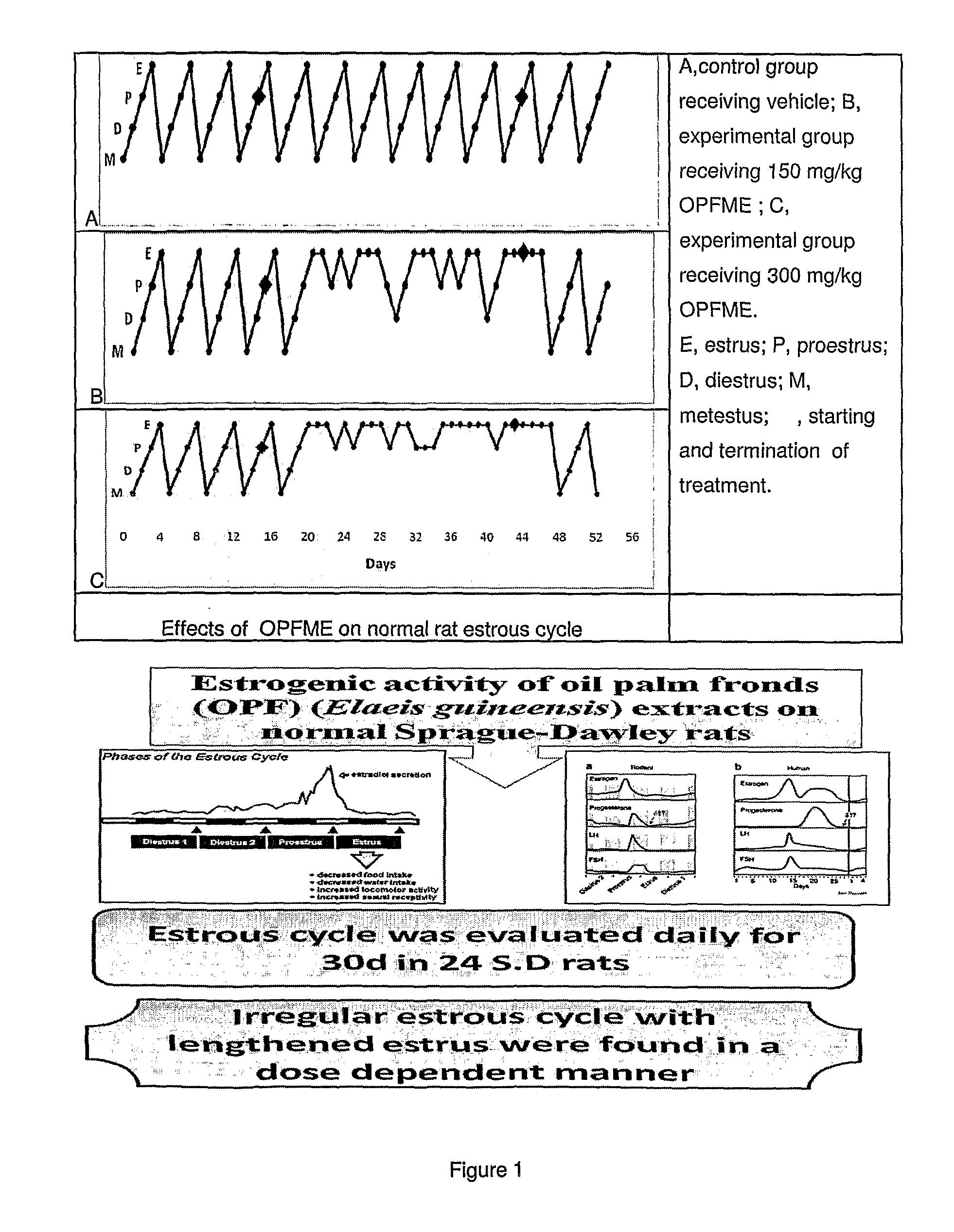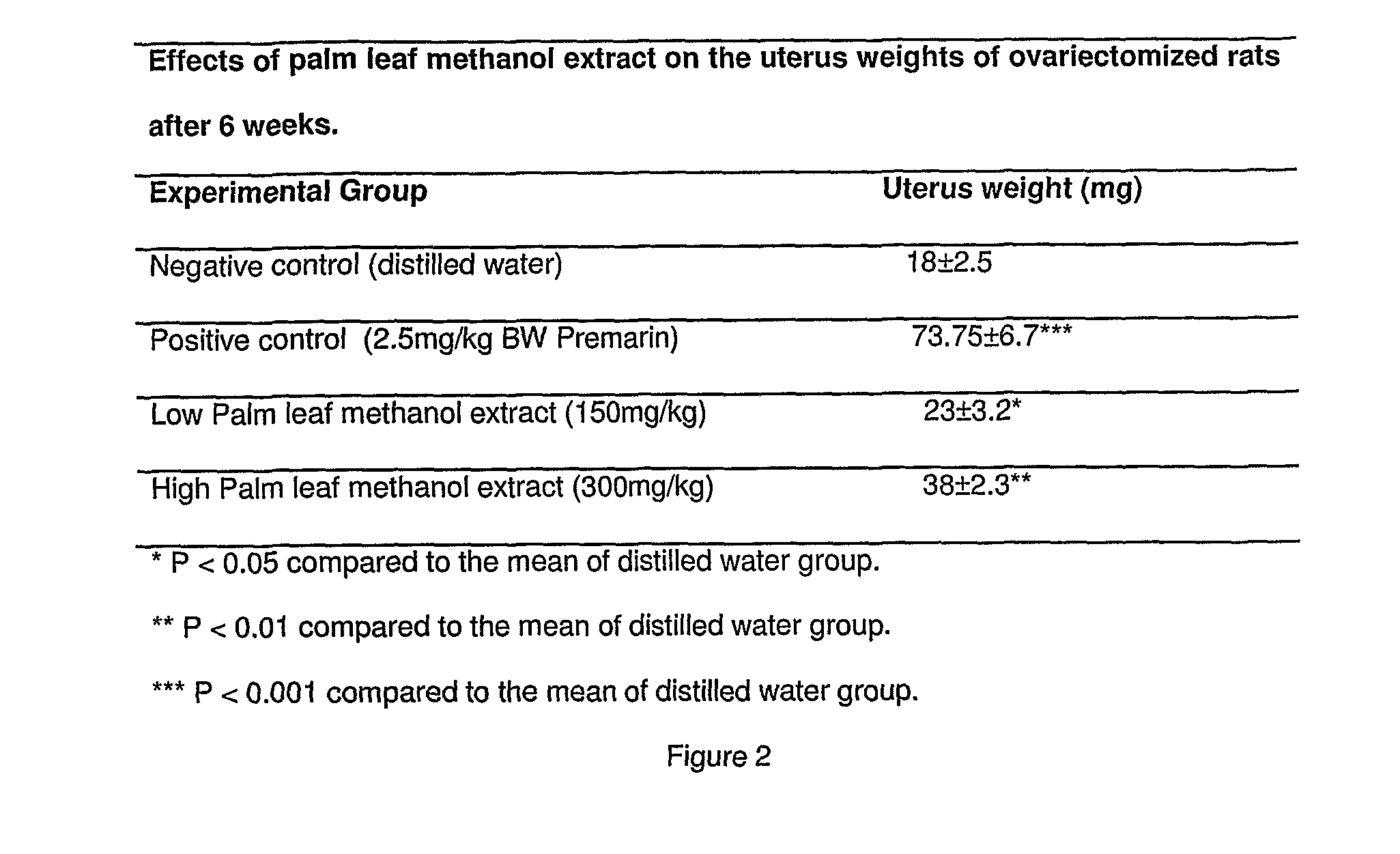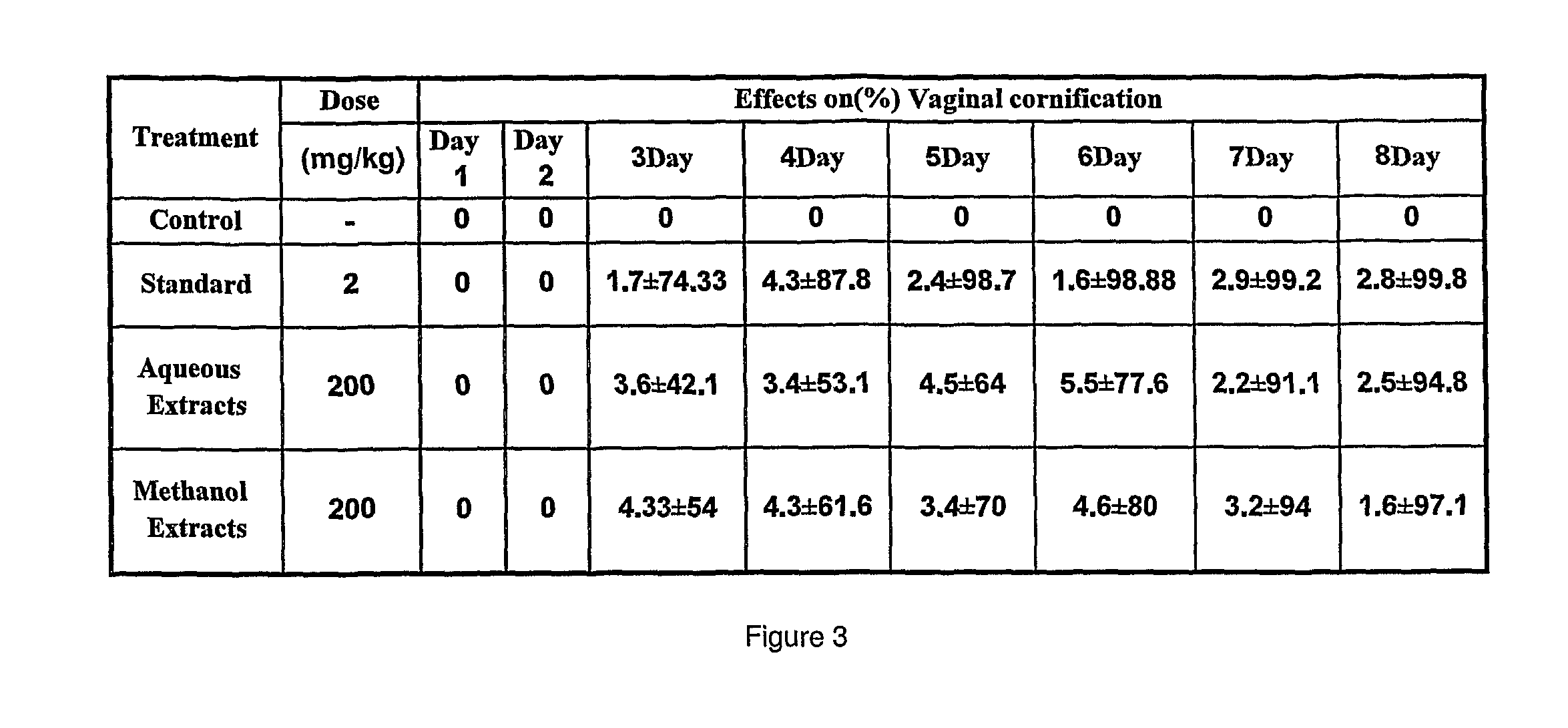Phytoestrogenic nutraceutical composition from palm leaf extract
- Summary
- Abstract
- Description
- Claims
- Application Information
AI Technical Summary
Benefits of technology
Problems solved by technology
Method used
Image
Examples
example 1
[0029]Adult female Sprague Dawley rats were randomly divided into three groups containing eight animals in each group: a vehicle control, a low dose (150 mg / kg), and a high dose (300 mg / kg) of palm Leaf extract (PLE) were measured and fed daily in the morning using a 2-g fresh apple wedge as vehicle. The apple vehicle eliminated stress associated with gavage, and rats eagerly ate the apple and the PLE in this manner, making it easy to monitor and ensure complete deliverance of the PLE. Vaginal smears from each rat were monitored daily between 09:00 and 10:00 h using staging criteria described by Everett (Evert. 1989). The vaginal epithelium cells observed under the microscope were classified into three types: leukocyte cells (L), nucleated cells (O) and cornified cells (Co). The representative cell type was determined by choosing the majority of cells. The results of examined vaginal smear cells from five rats in each treatment group were expressed as a mode value (the most frequent...
example 2
[0032]Phytoestrogenic enhancing activities of PLE were evaluated in normal and ovariectomised rats at 150 and 300 mg / kg doses. Estrogenic activity of the alcoholic extract was assessed in bilaterally ovarectomized female Sprague-Dawley rats taking percentage vaginal cornification, and uterine wet weight as parameters of assessment. Ovarectomized female rats (9 rats per group) given distilled water were used as a negative control, while rats gavaged daily with 5 mg / kg BW diethylstilbesterol were used as a positive control. At the end of treatment period of 14 days, rats were euthanized; the uteri were dissected and weighed, thereafter.
[0033]All rats had only L-type cells throughout the pre-treatment period after ovariectomy which confirmed that the ovaries were completely removed and no endogenous ovarian estrogens were produced. The administration of distilled water did not influence the vaginal epithelium, and only L-type cells were found. In contrast, synthetic estrogen induced a ...
example 3
[0036]Forty rats were randomly divided into 5 groups consist of eight rats in each group, control group (normal diet) was considered as negative control. Rats were allowed for acclimatization a week before the induction. Rat mammary gland tumour cells were grown to 80% confluence, harvested using 0.25% Trypsin-EDTA, counted for cell viability using a trypan blue exclusion test, and then resuspended in serum-free media. Cells were inoculated subcutaneously into mammary fat pad (right flank) of female Sprague-Dawley rats with a 200 μl of cell mixture (total 6×107 cells) using a 26-gavage needle. PLE were dissolved in water and administered orally. On day 14, the rats were sacrificed.
[0037]All animals were inspected daily, while body weights were recorded weekly. Rats were palpated weekly to monitor tumor development. The diameters of each tumor were measured with calipers and tumor volume was calculated using the following formula:
PUM
 Login to View More
Login to View More Abstract
Description
Claims
Application Information
 Login to View More
Login to View More - R&D Engineer
- R&D Manager
- IP Professional
- Industry Leading Data Capabilities
- Powerful AI technology
- Patent DNA Extraction
Browse by: Latest US Patents, China's latest patents, Technical Efficacy Thesaurus, Application Domain, Technology Topic, Popular Technical Reports.
© 2024 PatSnap. All rights reserved.Legal|Privacy policy|Modern Slavery Act Transparency Statement|Sitemap|About US| Contact US: help@patsnap.com










